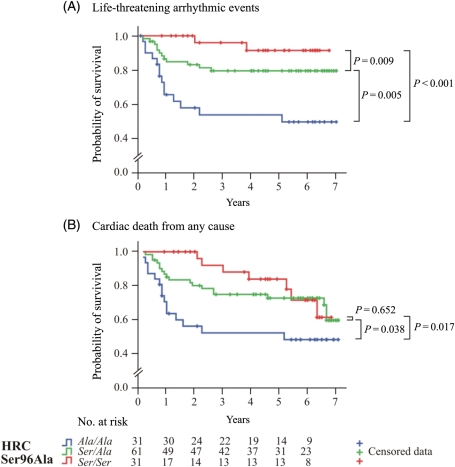Figure 6.
Kaplan–Meier plots for the probability of survival from: (A) life-threatening ventricular arrhythmic events including sudden cardiac death and episodes of unstable VT (>180 b.p.m.) or ventricular fibrillation, which were recorded by an implantable cardioverter-defibrillator device and (B) cardiac death from any cause, including pump failure, transplantation, sudden cardiac death, and episodes of unstable VT (>180 b.p.m.) or ventricular fibrillation, which were recorded by an implantable cardioverter-defibrillator device. Each event is depicted as a step down. Each censored case [due to (A) death from other causes except sudden cardiac death, heart transplantation, and study termination and (B) death from non-cardiac aetiology and study termination] is marked with a cross. The table at the bottom of the plots indicates the number of dilated cardiomyopathy patients in risk for each year of the follow-up study. The Ala/Ala homozygotes for the Ser96Ala polymorphism were statistically more susceptible to ventricular arrhythmic events, compared with Ser/Ala heterozygotes and Ser/Ser homozygotes.

